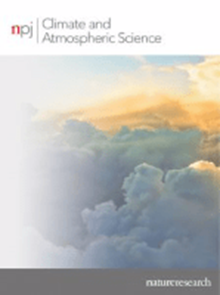Key propagation pathways of extreme precipitation events revealed by climate networks
IF 8.5
1区 地球科学
Q1 METEOROLOGY & ATMOSPHERIC SCIENCES
引用次数: 0
Abstract
The comprehensive understanding of propagation patterns of extreme precipitation events (EPEs) is essential for early warning of associated hazards such as floods and landslides. In this study, we utilize climate networks based on an event synchronization measure to investigate the propagation patterns of EPEs over the global land masses, and identify 16 major propagation pathways. We explain them in association with regional weather systems, topographic effects, and travelling Rossby wave patterns. We also demonstrate that the revealed propagation pathways carry substantial EPE predictability in certain areas, such as in the Appalachian, the Andes mountains. Our results help to improve the understanding of key propagation patterns of EPEs, where the global diversity of the propagated patterns of EPEs and corresponding potential predictability provide prior knowledge for predicting EPEs, and demonstrate the power of climate network approaches to study the spatiotemporal connectivity of extreme events in the climate system.


气候网络揭示的极端降水事件的主要传播途径
全面了解极端降水事件(EPEs)的传播模式对于洪水和山体滑坡等相关灾害的预警至关重要。在这项研究中,我们利用基于事件同步测量的气候网络来研究极端降水事件在全球陆块上的传播模式,并确定了 16 种主要传播途径。我们将它们与区域天气系统、地形效应和行进的罗斯比波模式联系起来加以解释。我们还证明,所揭示的传播路径在某些地区(如阿巴拉契亚山脉和安第斯山脉)具有很大的 EPE 可预测性。我们的研究结果有助于提高人们对极端环境事件关键传播模式的认识,极端环境事件全球传播模式的多样性和相应的潜在可预测性为预测极端环境事件提供了先验知识,并展示了气候网络方法在研究气候系统中极端事件时空连接性方面的威力。
本文章由计算机程序翻译,如有差异,请以英文原文为准。
求助全文
约1分钟内获得全文
求助全文
来源期刊

npj Climate and Atmospheric Science
Earth and Planetary Sciences-Atmospheric Science
CiteScore
8.80
自引率
3.30%
发文量
87
审稿时长
21 weeks
期刊介绍:
npj Climate and Atmospheric Science is an open-access journal encompassing the relevant physical, chemical, and biological aspects of atmospheric and climate science. The journal places particular emphasis on regional studies that unveil new insights into specific localities, including examinations of local atmospheric composition, such as aerosols.
The range of topics covered by the journal includes climate dynamics, climate variability, weather and climate prediction, climate change, ocean dynamics, weather extremes, air pollution, atmospheric chemistry (including aerosols), the hydrological cycle, and atmosphere–ocean and atmosphere–land interactions. The journal welcomes studies employing a diverse array of methods, including numerical and statistical modeling, the development and application of in situ observational techniques, remote sensing, and the development or evaluation of new reanalyses.
 求助内容:
求助内容: 应助结果提醒方式:
应助结果提醒方式:


